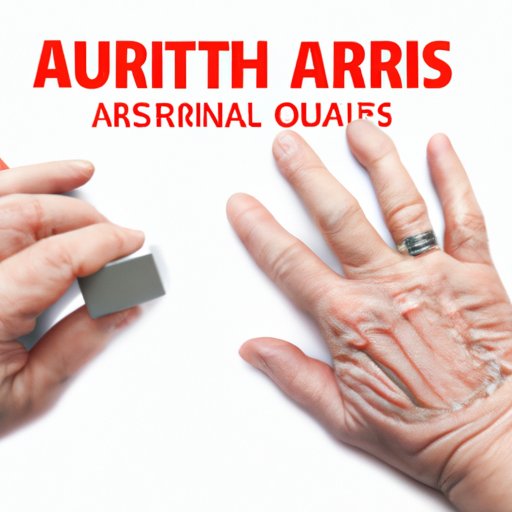
I. Introduction
Arthritis in hands is a condition that affects millions of people around the world, causing pain, stiffness, and limited movement in the joints. It’s important to test for arthritis in your hands because early detection can lead to better outcomes and decreased pain. In this article, we’ll explore how to test for arthritis in hands, including symptoms and early signs, self-assessments, professional evaluations, diagnostic tools and techniques, and treatment options.
II. Arthritis in Hands: How to Test for Symptoms and Early Signs
When it comes to testing for arthritis in your hands, there are several approaches you can take. Self-assessments allow you to check for symptoms and signs on your own, while professional evaluations use diagnostic tools and techniques to confirm a diagnosis. Imaging techniques, blood tests, and joint fluid analysis can also help identify any inflammation in the joints.
Each approach has its advantages and limitations. For example, self-assessments are a convenient and affordable way to test for arthritis in your hands, but they may not be as accurate as professional evaluations. On the other hand, professional evaluations may be more accurate, but they can be expensive and time-consuming.
To test for symptoms on your own, it’s important to pay attention to any pain, stiffness, or limited movement in your hands. Other potential symptoms include swelling, redness, or warmth in the joints. If you experience any of these symptoms, make an appointment with your doctor or a specialist.
III. 5 Simple Tests to Check for Arthritis in Your Hands
While self-assessments can be helpful, it can be challenging to know where to start. Here are 5 simple tests you can perform on your own to check for potential signs of arthritis in your hands:
- Finger Stretch: Gently stretch your fingers individually, including the thumb, and note any pain, stiffness, or resistance.
- Fist Test: Make a fist and note any pain or stiffness in the knuckles.
- Thumb Test: Touch your thumb to each finger and note any pain or stiffness in the joints.
- Wrist Test: Bend your wrist upward and downward and note any pain or stiffness in the joints.
- Grip Strength: Use a hand grip strengthener or squeeze a soft ball and note any pain or weakness in the hand.
While these tests can’t replace a professional evaluation, they can give you a better idea of whether you should seek medical attention for your symptoms.
IV. What to Expect During a Hand Arthritis Diagnosis
If you decide to seek professional help for your symptoms, you may be wondering what to expect during a hand arthritis diagnosis. Depending on your symptoms and medical history, your doctor may perform a physical exam, take X-rays, MRIs, or ultrasounds, or take a sample of your joint fluid to test for inflammation.
There are several types of arthritis that can affect the hands, including osteoarthritis, rheumatoid arthritis, and psoriatic arthritis. Each type has its own symptoms and treatment options, so it’s important to get an accurate diagnosis and work with your healthcare provider to develop a treatment plan.
V. Arthritis vs. Hand Injuries: How to Distinguish the Two
It can be challenging to differentiate between symptoms of arthritis and symptoms of hand injuries, such as sprains or fractures. Here are some common symptoms of each:
Arthritis Symptoms:
- Pain and stiffness in the joints, often worse in the morning or after resting
- Swelling, redness, or warmth in the joints
- Decreased range of motion in the affected joints
Hand Injury Symptoms:
- Sudden pain or injury to the hand, often associated with a specific event or activity
- Swelling or bruising in the affected area
- Difficulty moving or using the hand
If you suspect you have arthritis or a hand injury, it’s important to seek professional help to get an accurate diagnosis and treatment plan.
VI. Preventing and Treating Arthritis in Your Hands
While there is no cure for arthritis in hands, there are several things you can do to manage your symptoms and prevent the condition from worsening. Exercise can help strengthen the muscles around the joints, while dietary changes can reduce inflammation and improve overall health. Medications and therapies like acupuncture or physical therapy can also provide relief.
It’s important to work with your healthcare provider to develop a treatment plan that’s personalized to your needs and goals. By taking a proactive approach to arthritis in your hands, you can improve your quality of life and reduce the impact of the condition on your daily activities.
VII. Conclusion
Testing for arthritis in hands is an important step for anyone who experiences pain, stiffness, or limited movement in their joints. By using self-assessments, seeking professional help, and taking a proactive approach to treatment and prevention, you can manage your symptoms and improve your quality of life. Remember, if you experience any symptoms of arthritis in your hands, seek professional help as soon as possible.





